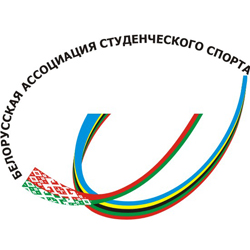Факультеты
TO THE 100TH ANNIVERSARY OF THE FORMATION OF THE MOZYR DISTRICT
- Подробности
- Опубликовано 05.07.2024 13:22
At the XII Congress of the RCP(b), held in April 1923, the tasks of the reform and methods of its implementation were defined. The administrative-territorial structure of the USSR was based on the principle of economic zoning to ensure the most rational and comprehensive development of the national economy and increase the efficiency of production.
On 24 March 1924, the Council of People's Commissars of the BSSR approved a special commission on zoning under the State Planning Committee of the BSSR, entrusting it with the development of general principles of the new administrative and economic division of the republic into districts and districts. District and rayon commissions on administrative-territorial division were established locally. The district commissions worked out the project of district zoning, and the rayon commissions worked out the project of determining the territories of rural councils within the administrative district. This took into account the economic peculiarities of the territories of administrative districts, their economic power, the number, density and national composition of the population, the location of political, economic and cultural centres, the direction and nature of communication routes. The need to bring the state apparatus closer to the masses, central state bodies - to local authorities, the possibility of locating state institutions in the newly created administrative centres were also taken into account.
At the end of May 1924, the commission on zoning under the State Planning Committee of the BSSR discussed the drafts of the organisation of districts and districts and found it expedient to form 10 districts and 100 districts in the republic. In June 1924 the project was approved by the Council of People's Commissars and the Presidium of the Central Executive Committee of the BSSR. Thus, the Second session of the CEC of the BSSR of the VI convocation, which took place on 10-17 July 1924, legislated a new administrative-territorial division of the republic, abolished uyezds and volosts and approved districts and districts.
Cities and towns became the structural units of the new system. In 1924 there were 11 medium-sized towns (from 10 to 100 thousand inhabitants) and a dense network of mestochki - small urban-type settlements on the territory of the Belarusian SSR. The centre of the districts was to be one of the medium-sized towns. Of the 11 cities, 6 were of industrial importance (Bobruisk, Borisov, Vitebsk, Minsk, Mogilev, Orsha) and 3 were of commercial importance (Polotsk, Slutsk, Mozyr).
Often created districts differed considerably in area and population. The largest district was Mozyr (16.3 thousand km 2 ), which was twice as large as the smallest - Orsha (8 thousand km 2 ), but the population in Orsha district was 1.3 times more than in Mozyr.
Mozyr District included 10 districts: Mozyr, Zhitkovichi, Kalinkovichi, Kopatkevichi, Korolin, Lelchitsy, Narovlyansky, Ozarichi, Petrikov, and Turov.
On 20 August 1924 it was divided into 11 village councils: Bibikovsky, Bokovsky, (Velikobokovsky), Kazimirovsky, Kustovnitsky, Makhnovichi, Meleshkovichi, Mikhalkovsky, Osovetsky, Prudkovsky, Skrygalovsky, Slobodsky. On 2 January 1925 Bobrenyatsky and Bobrovsky village councils were formed.
The reform of administrative-territorial division required the distribution of administrative and administrative functions between administrative-territorial units vertically. In the spring of 1924, work began on the preparation of regulations on district and rayon congresses of Soviets and their executive committees, as well as a new regulation on village councils. Drafts of these regulations were developed by the NKVD and the Commission on Zoning, then approved by the SNK and the Presidium of the CEC of the BSSR and finally approved by the II session of the CEC of the BSSR on 17 July 1924.
The reform of the administrative-territorial division required the distribution of administrative and administrative functions between administrative-territorial units vertically. In the spring of 1924, work began on the preparation of regulations on district and rayon congresses of Soviets and their executive committees, as well as a new regulation on village councils. Drafts of these regulations were developed by the NKVD and the Commission on zoning, then they were approved by the SNK and the Presidium of the CEC of the BSSR and finally approved by the II session of the CEC of the BSSR on 17 July 1924.
Mozyr district executive committee started its work on 20 August 1924.
The increasing unevenness in the administrative division after the enlargement of the BSSR in 1926, as well as the unfolding industrialisation and the shortage of funds for its implementation necessitated further reorganisation of the administrative-territorial division.
On 5 October 1926 Mozyr district was renamed into Slobodsk district.
In accordance with the resolution of the CEC and SNK of the USSR of 23 July 1930 and on the basis of the resolution of the CEC and SNK of the BSSR of 26 July 1930. ‘The district was excluded from the administrative-territorial system of the BSSR. Rayon executive committees were given the rights and duties that were previously assigned to the district executive committees. The districts became subordinate directly to the central republican administrative bodies.
In connection with these changes Mozyr district was again created on 27 September 1930. It included 17 village councils: Antonovsky, Bobrenyatsky, Bobrovsky, Gulevichsky, Domanovichsky, Dudichsky, Zelenochsky, Kakuyevichsky, Kalinkovichsky, Kaplichsky, Klinsky, Lipovsky, Maloavtyukovsky, Prudskovsky, Slobodsky, Sukhovichsky, Yakimovichsky.
After the liquidation of the district link and consolidation of a number of districts, the large size of administrative districts became evident, which turned out to be difficult to manage. The two-tier (district - village council) system of local Soviets faced a number of difficulties due to the increasing complexity of tasks and functions of local government bodies. Therefore, in 1935 4 districts were created in the north and south of Belarus, including Mozyr district. It included 9 districts: Domanovichi, Zhitkovichi, Yelsk, Kopatkevichi, Lelchitsy, Mozyr, Narovlya, Petrikov, and Turov.
The district was liquidated in connection with the replacement of districts by oblasts. On February 20, 1938 it became a part of Polesskaya oblast with the centre in Mozyr.
In July 1939 the Kalinkovichi district was restored. On 1 January 1941 Mozyr district included 10 village councils: Bibikovsky, Bobrenyatsky, Bobrovsky, Kazimirovsky, Kamenkovsky, Meshkovichsky, Mikhalkovsky, Prudkovsky, Skrygalovsky, Slobodsky.
The state administration on the territory of Belarus liberated from the Nazi invaders was carried out within the framework of the administrative-territorial division, which had been formed by 1941 and which fulfilled its functions during the Great Patriotic War: underground regional committees, city and district committees of the Party, authorities in partisan zones were created. The tasks of post-war reconstruction were carried out in the context of overcoming the consequences of the war. A number of administrative units were abolished and the status of settlements was changed.
In 1954, a new administrative-territorial reform was carried out in connection with the restoration of the national economy and the policy of enlargement of administrative units. Thus, the Polesie region was liquidated. On 8 January 1954 Mozyr district became a part of Gomel region. On 16 July 1954 Bobrenyatsky and Kazimirovsky village councils were liquidated.
As of 1 January 1981 Mozyr district included the city of Mozyr and 10 village councils: Barbarovsky, Bobrovsky, Kamenkovsky, Krinichny, Makhnovichky, Mikhalkovsky, Osovetsky, Prudkovsky, Skrygalovsky, Slobodsky.
Today Mozyr District is one of the largest industrial, agrarian and cultural centres of Belarus. The administrative territory of the district is divided into 10 rural councils, which include 92 settlements. Mozyr is the second largest city in Gomel region. In accordance with the Decree of the President of the Republic of Belarus No. 396 of 30 August 2007 Mozyr District and the city of Mozyr were united into one administrative unit - Mozyr District with its administrative centre in the city of Mozyr.


























































